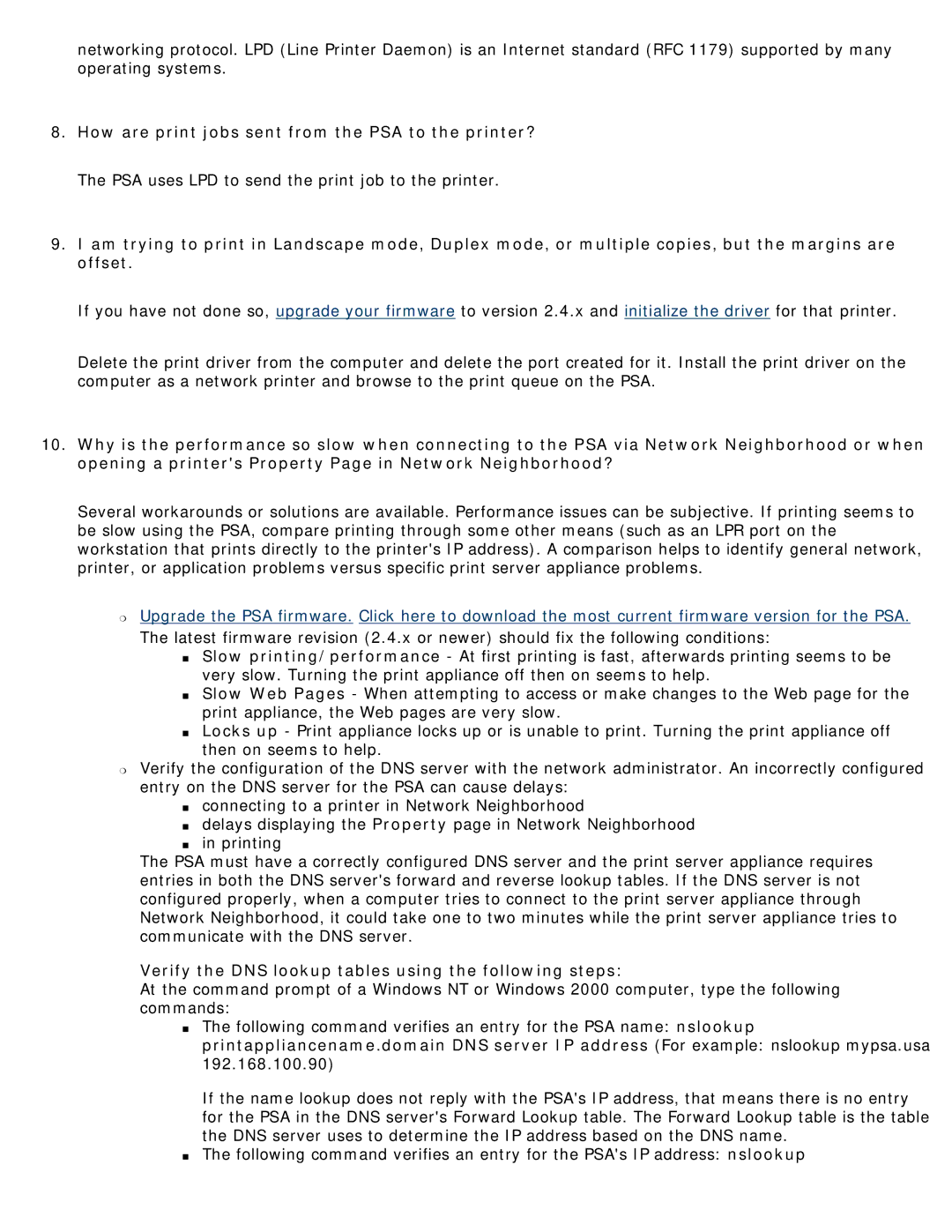networking protocol. LPD (Line Printer Daemon) is an Internet standard (RFC 1179) supported by many operating systems.
8.How are print jobs sent from the PSA to the printer? The PSA uses LPD to send the print job to the printer.
9.I am trying to print in Landscape mode, Duplex mode, or multiple copies, but the margins are offset.
If you have not done so, upgrade your firmware to version 2.4.x and initialize the driver for that printer.
Delete the print driver from the computer and delete the port created for it. Install the print driver on the computer as a network printer and browse to the print queue on the PSA.
10.Why is the performance so slow when connecting to the PSA via Network Neighborhood or when opening a printer's Property Page in Network Neighborhood?
Several workarounds or solutions are available. Performance issues can be subjective. If printing seems to be slow using the PSA, compare printing through some other means (such as an LPR port on the workstation that prints directly to the printer's IP address). A comparison helps to identify general network, printer, or application problems versus specific print server appliance problems.
❍Upgrade the PSA firmware. Click here to download the most current firmware version for the PSA. The latest firmware revision (2.4.x or newer) should fix the following conditions:
■Slow printing/performance - At first printing is fast, afterwards printing seems to be very slow. Turning the print appliance off then on seems to help.
■Slow Web Pages - When attempting to access or make changes to the Web page for the print appliance, the Web pages are very slow.
■Locks up - Print appliance locks up or is unable to print. Turning the print appliance off then on seems to help.
❍Verify the configuration of the DNS server with the network administrator. An incorrectly configured entry on the DNS server for the PSA can cause delays:
■connecting to a printer in Network Neighborhood
■delays displaying the Property page in Network Neighborhood
■in printing
The PSA must have a correctly configured DNS server and the print server appliance requires entries in both the DNS server's forward and reverse lookup tables. If the DNS server is not configured properly, when a computer tries to connect to the print server appliance through Network Neighborhood, it could take one to two minutes while the print server appliance tries to communicate with the DNS server.
Verify the DNS lookup tables using the following steps:
At the command prompt of a Windows NT or Windows 2000 computer, type the following commands:
■The following command verifies an entry for the PSA name: nslookup
printappliancename.domain DNS server IP address (For example: nslookup mypsa.usa 192.168.100.90)
If the name lookup does not reply with the PSA's IP address, that means there is no entry for the PSA in the DNS server's Forward Lookup table. The Forward Lookup table is the table the DNS server uses to determine the IP address based on the DNS name.
■The following command verifies an entry for the PSA's IP address: nslookup
